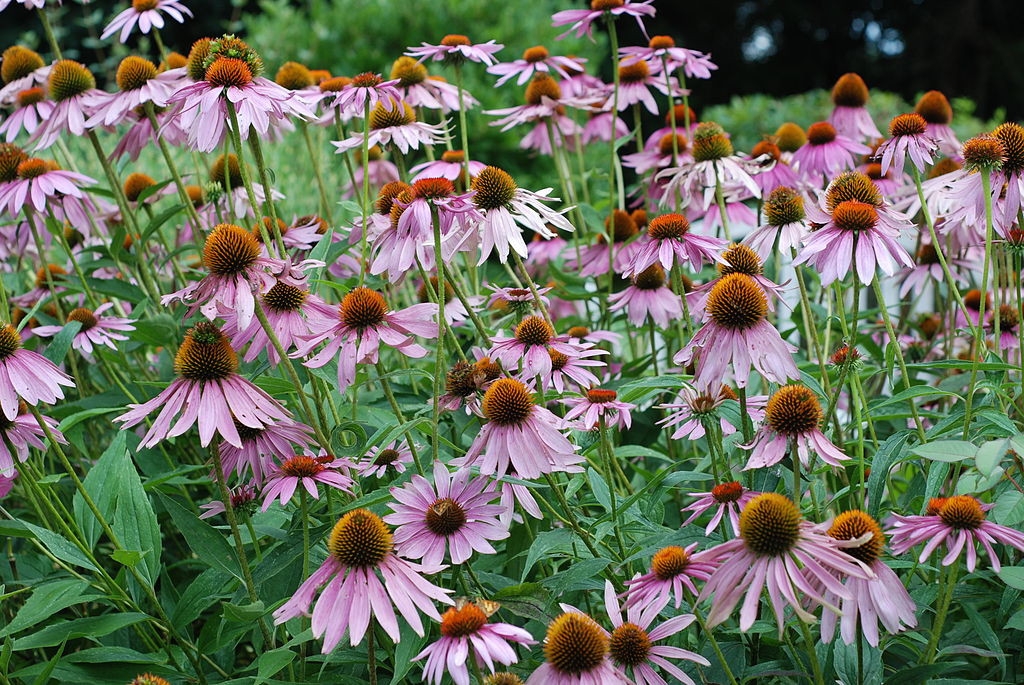

Their differences are based on chemical ratios present in the roots. For example, 'White Swan' has ivory petals and a yellow center, 'Sundown' touts orange petals and a flat center, 'Fatal Attraction' has black stems and deep magenta petals, and 'Ruby Giant' grows 4 - 12 inches (10 - 30 cm) than most other cultivars.ġ1 distinct species belong to the Echinacea genus, but Echinacea purpurea, or 'purple coneflower', is the most commonly used for medicinal purposes. Echinacea, with its prickly scales and its large conical seed head, received its name because of its resemblance to a hedgehog (the hedgehog's Greek name is echinos).ĭozens of cultivars of Echinacea purpurea have been developed, differing primarily in their petal color, their center shape and color, and other physical characteristics. Many of the herb's nutritional properties reside in its roots, though the entire plant offers healthful benefits.Įchinacea purpurea is a member of the Asteraceae family, sharing its characteristic star-shaped petals with 23,000 other species, such as chamomile ( Matricaria chamomilla), dandelion ( Taraxacum officinale), and marigold ( Tagetes erecta). Leaves are covered in coarse hair, and the spiny central cone produces yellow pollen. It features several individual stems ending in recognizable pink to light purple flowers. While consuming echinacea is fairly safe for women who are pregnant or breastfeeding, little research has been done on its effects, so during pregnancy or lactation women should consult a physician before taking the herb in medicinal doses.Įchinacea, also known as purple coneflower, is a perennial herb that can grow up to 47 inches (120 cm) in height and 20 inches (50 cm) in width. Likewise, those who suffer from auto-immune disorders, such as multiple sclerosis (MS) lupus, or rheumatoid arthritis should also use echinacea with caution, since consuming this herb can worsen these conditions. Individuals who are sensitive to Asteraceae species, such as ragweed, mums, or daisies should exercise caution when taking echinacea, since this herb can also trigger allergic reactions.
Purple coneflower herb skin#
When applied topically, echinacea can also cause minor skin irritation. The herb rarely triggers negative reactions however, there are potential side effects to watch out for, including: fever, nausea, vomiting, upset stomach, diarrhea, unpleasant taste, headache, dry mouth, dizziness, and joint and muscle pain. Echinacea Side EffectsĮchinacea is likely safe for most people when taken by mouth. Other herbs that enhance immunity are astragalus, cabbage, and noni, while calendula, garlic, and lime also have antimicrobial properties. THE ABOVE-GROUND PARTS OF THE PLANT CONTAIN POLYSACCHARIDES THAT CAN IMPROVE IMMUNE RESPONSE. On the other hand, humulene and alkamides are thought to be responsible for echinacea's ability of fighting infections. The alkamides contained in echinacea seem to give the herb its immune stimulant properties, whereas caffeic acids are antiseptic and antimicrobial in nature. The exact compounds responsible for the medicinal properties of echinacea are still not entirely understood, but the echinacea herb has been found to contain fat-soluble alkamides, caffeic acid, and polysaccharides, whereas its volatile oil contains humulene, which in vitro studies have suggested to possess anti-inflammatory effects. Echinacea's anti-inflammatory properties have long been used for the relief of cough, cold, and throat irritation. The antiseptic properties of echinacea have been traditionally used to sanitize open wounds and prevent infections. Echinacea has immune stimulant properties, which help prevent the attack of harmful pathogens and aid recovery.Īlong the centuries, echinacea health benefits have found a number of folk applications, which include:ĭisinfecting wounds and scrapes. Echinacea medicinal properties have proven effective in the treatment of viral and bacterial diseases, particularly respiratory and urinary tract infections.Įnhancing immunity. It has been traditionally prescribed to treat a myriad of health conditions however, echinacea properties have been shown to be mainly useful for: The echinacea herb has a long history of medicinal uses.


 0 kommentar(er)
0 kommentar(er)
